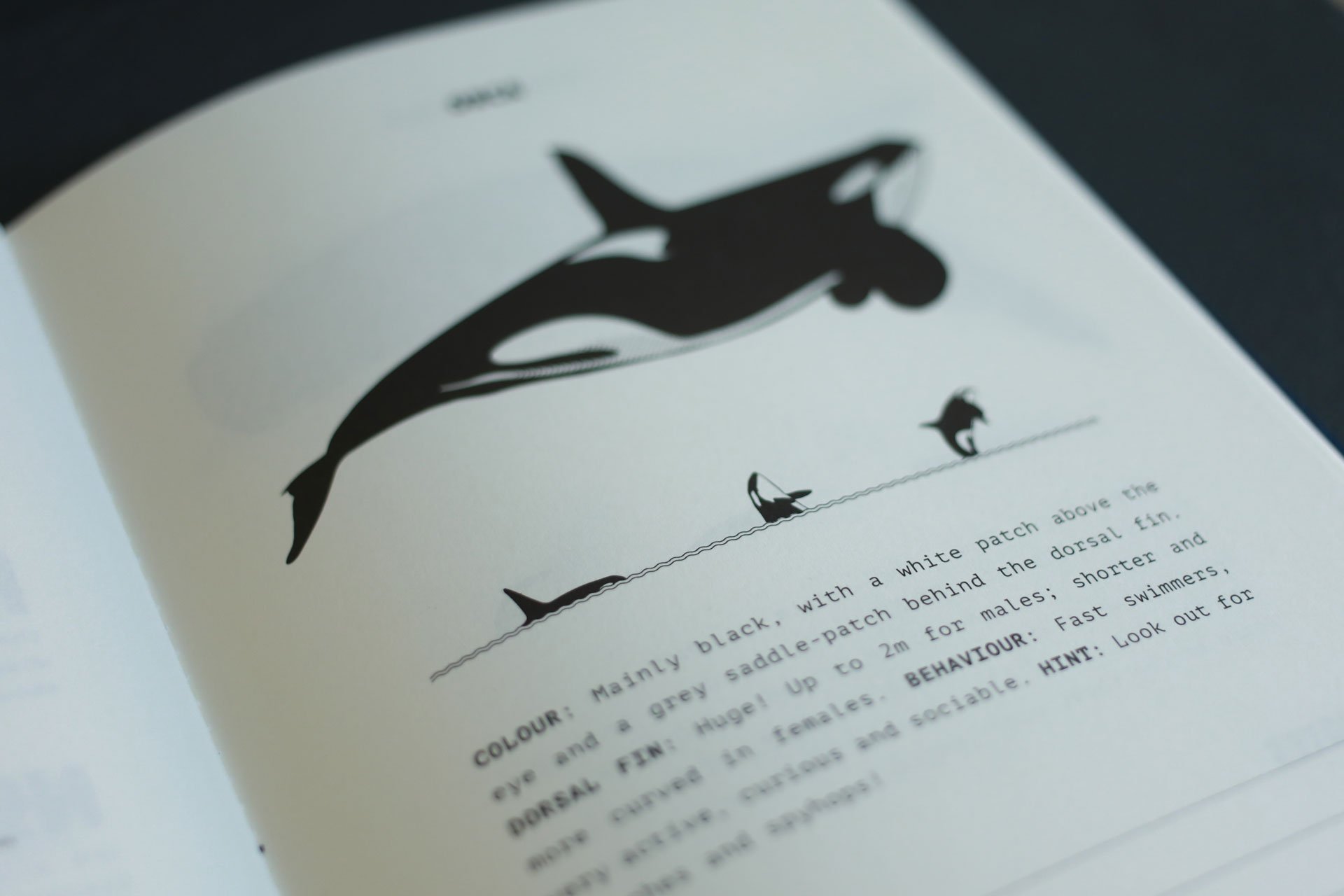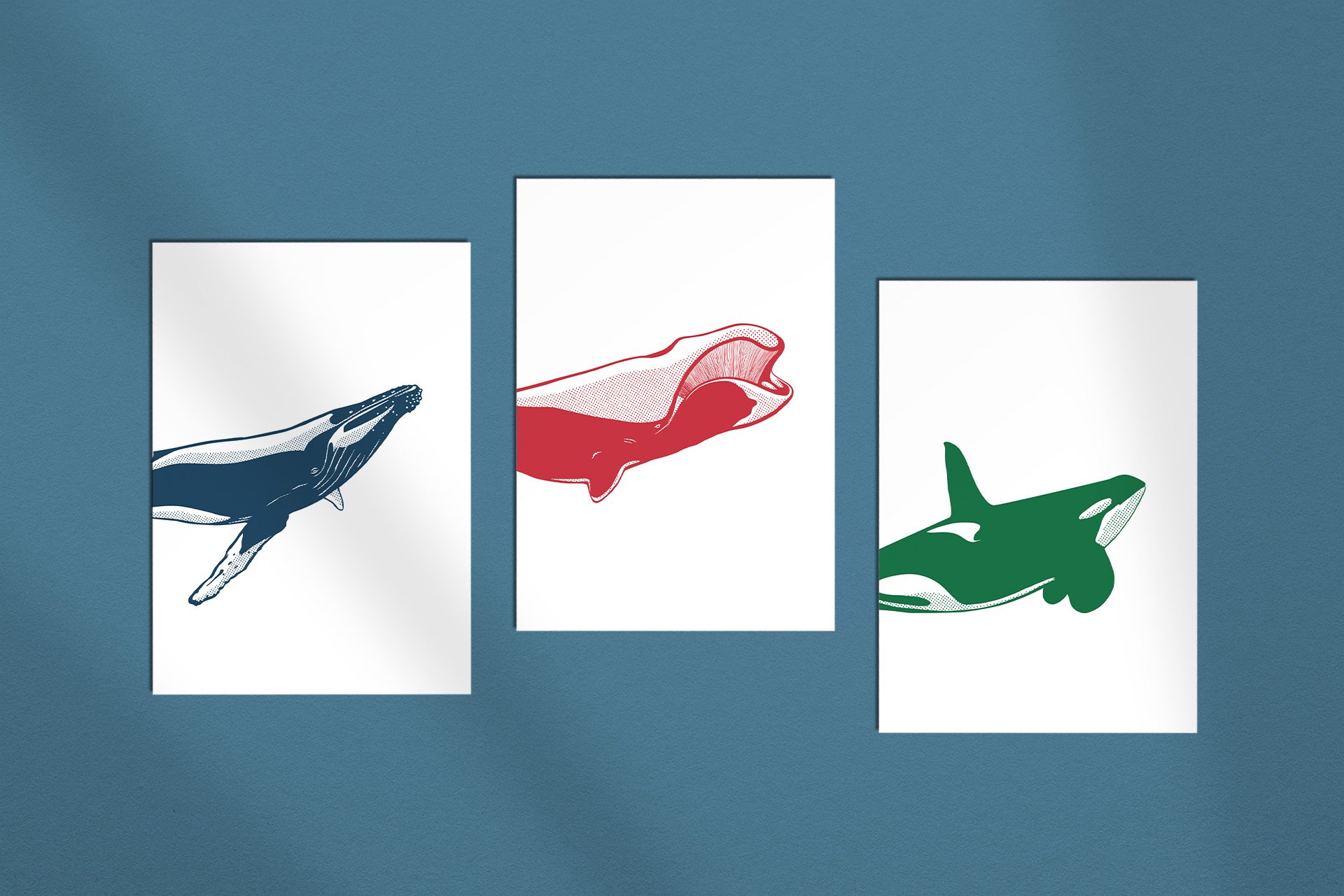Minke Whales
The smallest of the large whales. Curious and playful – and gone faster than you can look!
Photo: iStock
REVIEW: Minke Whales
Minke whales are among the most popular whale-watching cetaceans. On the one hand, because they are so playful and curious – on the other hand, because there are still quite a few of them.
Minke whales are the smallest and most common large whales. As I am particularly fascinated by the sheer size of whales, accompanied by the fact that it always takes a bit of luck to encounter them at all, minke whales are not quite as interesting to me (so far).
Nevertheless, they are very popular on whale-watching tours, partly because they are among the more curious and playful whales: They often come very close to the boats, sometimes accompanying them for a longer period of time. In addition, minke whales like to appear suddenly – and disappear again just as suddenly. So you have to be prepared.
Minke whales are in the public eye primarily because they continue to be hunted by the remaining whaling nations. It is estimated that there are between 500,000 and one million minke whales worldwide – reason enough for Norway, Iceland and Japan to kill several thousand animals every year.
Especially in countries where whale watching is becoming increasingly important, this can lead to strange conflicts: Sometimes whalers and whale watchers compete for the very same whale.
“In countries such as Iceland or Norway, it is mainly tourists who eat whale meat – often because they think that the locals eat it all the time, which is not the case at all. It’s mainly about folklore.”
I've read a few books about whaling in the 19th and 20th centuries, and you really have no idea what a huge, unbelievable madness it was:
Whales killed and processed industrially by the millions on large factory ships, gigantic mobile slaughterhouses, killing at a frequency as if whales were an unlimited and infinitely renewable resource. Ever better techniques to kill and process even more animals even faster. When one species was almost wiped out, the next one was specialised in. When one sea was almost empty, the next one was moved to.
Almost every single species of large whale was almost wiped out by this decades-long excess that got completely out of control. And for what? Mainly for heating and fuel oil – the blubber layer of the whales, from which the coveted whale oil was extracted, was the basis of entire industries. Candles, paints, soaps, cosmetics, clothing and even explosives were made from whales. Explosives that were then used to kill even more whales.
Minke whales are the smallest of all large whales. However, at seven to ten metres, they are not exactly tiny.
It was only with the invention of plastics and petroleum that whales lost their importance as raw materials in the middle of the 20th century. Late enough, because there were hardly any left. The parallels with today's excessive and ill-considered exploitation of the planet are hard to overlook.
Today, it is mainly minke whales that are officially hunted, and not for their oil, but for their meat. Demand is falling from year to year. The paradox: in countries such as Iceland or Norway, many tourists are also among the consumers, not least because they think that the locals eat whale meat all the time – which is actually not the case at all.
Incidentally, due to the enormous pollution of the oceans, whale meat is highly contaminated and not really recommended.
Photo: Oliver Dirr / Whaletrips
Size
Minke whales grow to 7 to 10 metres, females are larger than males. Weight: approx. 9 tonnes.
Colour
Dark grey back, light to white belly. Sometimes with grey markings and streaks on the back.
FORM
Slender, streamlined body with a very pointed, V-shaped snout, flat upper jaw and often pink throat furrows.
Blow
The blow of the minke whale is rather inconspicuous – a maximum of two to three metres high.
Fin
Upright and crescent-shaped, lies very far back on the back. The highest fin of all baleen whales in relation to body size.
FLUKE
Dark on the upper side, light grey on the underside. Concave rear edge with strong indentation and very pointed ends.
Behaviour
Sometimes very playful and curious. Appears just as suddenly as it disappears again. Sometimes accompanies boats over longer distances.
Dives
After 5 to 8 breaths at intervals of about one minute, a longer dive of 2 to 8, sometimes up to 20 minutes, usually follows.
Numbers
Unclear, but not endangered. There are probably between 500,000 and 1 million animals worldwide.
Photo: Oliver Dirr / Whaletrips
CHECKLIST: Minke Whales
Minke whales can be easily distinguished from other whales by their pink-coloured throat furrows and their significantly elevated position in the water when surfacing.
Minke whales usually travel in small groups of up to three animals, rarely in larger groups. They are active at the surface, slapping the water with their flukes and flippers and get far out of the water when spy-hopping. They are open to boats and often curious, sometimes following them for a long time.
Even when surfacing, minke whales can be easily distinguished from all other whales, as they always lift their heads out of the water at a shallow angle so that the pink-coloured throat furrows can often be seen.
“Occasionally minke whales breach, but the whole thing usually looks a bit over-motivated and – forgive the pun – a bit misshapen.”
When exhaling, the minke whale is slightly higher in the water than other whales, so that its head and back are easily recognisable. In contrast to the much longer blue and fin whales, the minke whale's blowhole and fin can be seen at the same time.
Minke whales normally take 5 to 8 breaths at intervals of about one minute. Before the next long dive, they arch their backs into a distinct hump, the tail is also strongly curved, but the fluke is hardly ever lifted into the air.
Minke whales are then underwater for 2 to 8 minutes, sometimes up to 20. They like to resurface in completely different places than one would actually expect.
Photo: Oliver Dirr / Whaletrips
Where and when: Minke Whales
You can encounter minke whales in almost all the whale-watching areas of the world – in Québec you can even observe them quite well from land.
Minke whales are found in all the world's oceans and generally prefer colder rather than warmer waters. They therefore spend the summer in the higher and winter in the lower latitudes. Many populations are constantly migrating back and forth, but others are resident and spend the whole year in the same area.
The ideal companion for your next whale trip: In our shop you will find our TRAVEL NOTES in five great colours – with the most important whale information for your trip and plenty of space for your own notes, observations and memories. Order now!
Similar to fin whales, minke whales can be found in most places where other whales can be observed. Most whale-watching providers specialise in humpback whales, grey whales, sperm whales or orcas; there are very few tours that primarily advertise minke whales. Nevertheless, encountering them can be a real highlight.
The best chances are around Iceland, but also in Norway and on the British Isles. They are also very common on the American and Canadian east coast, and in Quebec there are a few places where they can often be seen from land.
On the American and Canadian west coast, on the other hand, they are somewhat rarer to see, but even here you can be lucky. The same goes for Australia, where they can even be seen on a snorkelling trip in the Great Barrier Reef.
Even more Whales
〰️
Even more Whales 〰️
Whaletrips Shop
The ideal Companion for your whale trip
All the whale facts you need while on the road – with plenty of space for own thoughts and observations!
Whaletrips Shop
Our Whales as Cards and Stickers
Colourful, finely illustrated, ready to stick on: Our whales are now available as stickers and greeting cards!
Whaletrips Shop
Beautiful whale Notebooks
Whether for travelling or at home: our high-quality whale notebooks come in five beautiful colours!
Whaletrips Shop
Our favourite photos for your home
Brightens any wall: a selection of our favourite motifs is available as elegant fine art print for your home.











